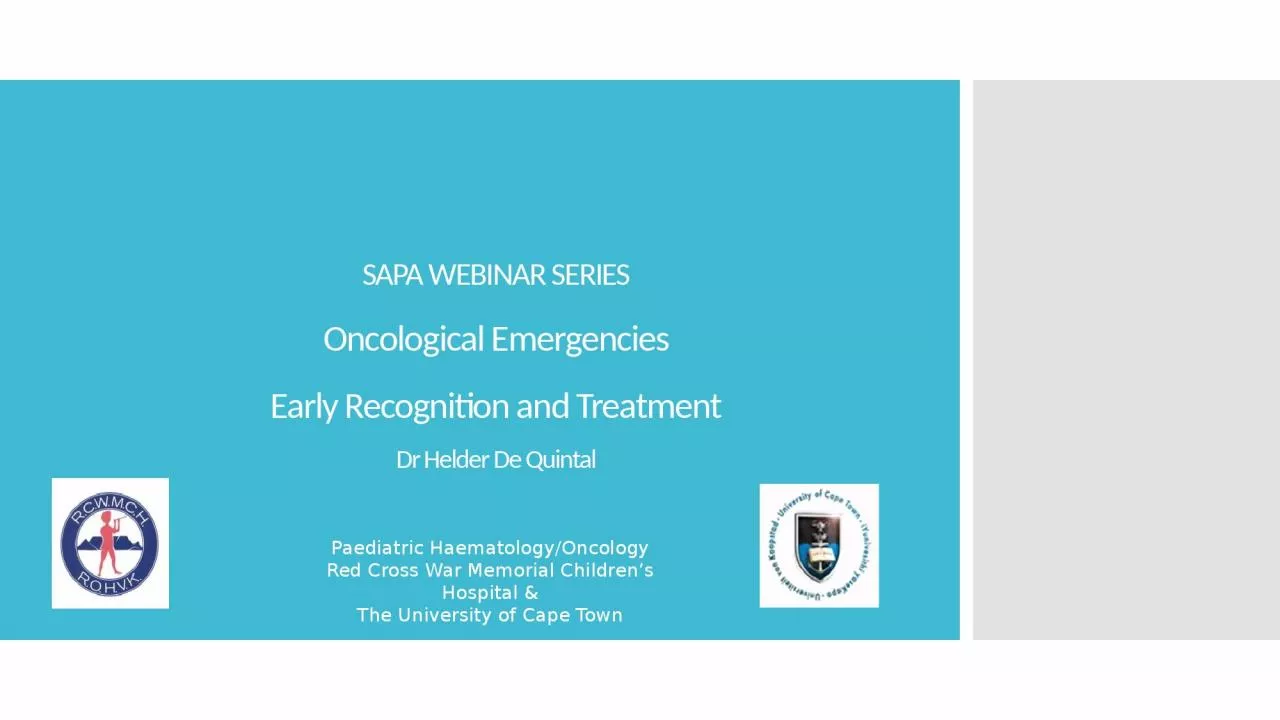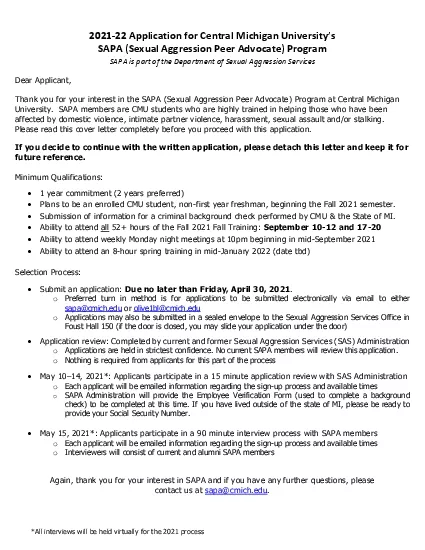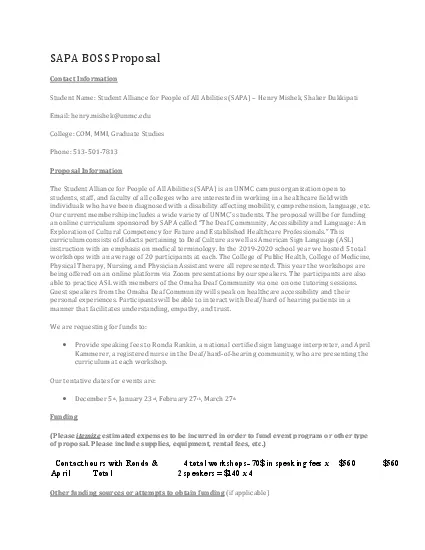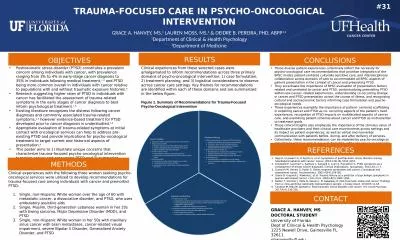PPT-SAPA WEBINAR SERIES Oncological Emergencies
Author : jovita | Published Date : 2024-01-29
Early Recognition and Treatment Dr Helder De Quintal Paediatric Hae matology Oncology Red Cross War Memorial Childrens Hospital amp The University of Cape Town
Presentation Embed Code
Download Presentation
Download Presentation The PPT/PDF document "SAPA WEBINAR SERIES Oncological Emergenc..." is the property of its rightful owner. Permission is granted to download and print the materials on this website for personal, non-commercial use only, and to display it on your personal computer provided you do not modify the materials and that you retain all copyright notices contained in the materials. By downloading content from our website, you accept the terms of this agreement.
SAPA WEBINAR SERIES Oncological Emergencies: Transcript
Download Rules Of Document
"SAPA WEBINAR SERIES Oncological Emergencies"The content belongs to its owner. You may download and print it for personal use, without modification, and keep all copyright notices. By downloading, you agree to these terms.
Related Documents














